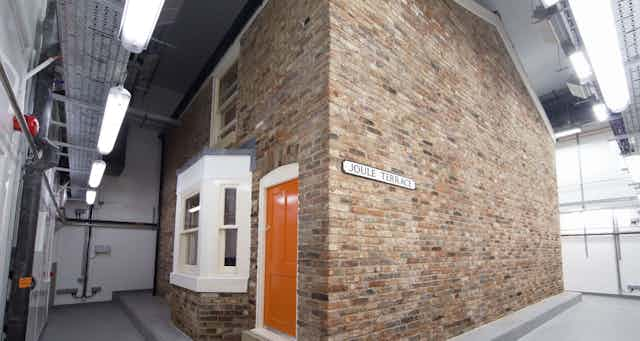What does making a house “energy efficient” actually mean? We know it’s important: homes account for around a quarter of total energy consumption, and most of this is used for heating and hot water. So anything you can do to reduce usage will help your bottom line.
Efficiency programmes range from the provision of low energy light bulbs to whole-house retrofitting. As researchers in the field, the one question we are always asked is: “If I do this, how much energy will it save?” To which we give the helpful answer: “It depends”. There is lots of advice out there, after all, and the media, charities and local authorities all provide guidance. But just how much of it is based on real scientific evidence?
A common piece of advice is to turn your thermostat to 21°C to ensure an energy efficient and comfortable home. However, work by my colleagues and I found older thermostats can easily vary by up to 2°C, meaning we could actually be heating our homes to anything between 19°C and 23°C. If we consider the Energy Savings Trust’s advice that reducing home temperature by 1°C could save 10% on heating bills, then this discrepancy has implications.
Often, when a home is made more energy efficient, people simply decide to absorb the savings – in both money and heat – by keeping their houses warmer. Energy consumption may even increase. This is known as the “take back effect”, or Jevons Paradox. In the UK, this effect accounts for an average of 35% of the initial saving, although individual homes may be more extreme. This further confounds the predicted models that the improvements may have been sold on.

Perhaps the most contentious reason for efficiency improvements not performing as designed is simply down to poor design or installation. Wall insulation could be missing, windows could be poorly fitted, or the actual materials used could be different from those dictated in the original design. Research on new build homes has found this “performance gap” can make these buildings less than half as efficient as they were supposed to be.
Turning an entire house into an experiment
To investigate these gaps, paradoxes and myths, colleagues and I established the Salford Energy House. Essentially it’s an entire terraced house, built from brick to traditional British housing standards, but constructed within a climate controlled chamber. This allows us to manipulate the weather to be anything from -12ºC to +30ºC or as rainy and windy as we like.
Given we know exactly how the house was built, how it is “used” (by our researchers), and the “weather” it is exposed to, we can get a very good idea of how efficient it is. When we add curtains, better thermostats or other improvements, we can compare results with those from the original, unimproved house and try to find the difference. Our tests are extensive, detailed and give us data that would be impossible in the field – no actual homeowner would want nearly 300 sensors attached to their house.

And what did we find? We added living room thermostats and thermostatic radiator valves and established energy savings of over 40% when compared to a property with no controls. We identified that curtains reduce heat transfer through the windows by about 30% when closed. When we retrofitted the whole house with floor insulation, solid wall insulation, loft insulation and new glazing, the annual heating costs were reduced by a huge 63%.
However, if we are questioned as to how much a particular action or improvement will make to a homeowner, it still “depends”. This is because every home and family is different: some people are home all day, some people are rarely in; others, such as those who have chronic illnesses, need different internal temperatures to those who don’t.
Closing your curtains may save lots of heat, but the number and type of windows, location of radiators, and when they are opened or closed will greatly influence this saving on an individual home. Houses come in all sorts of sizes, shapes and levels of efficiency, particularly in the UK, where we are fond of our older, energy inefficient housing stock.
We can give guidance based on data, but when it comes down to an individual home there will always be confounding variables that might mean actions or improvements will not perform as expected. Even in our energy house, where we can compare one action or improvement against another to a high level of detail, we are really only able to give a miles-per-gallon perspective – much of it will depend on your car and how you drive.

